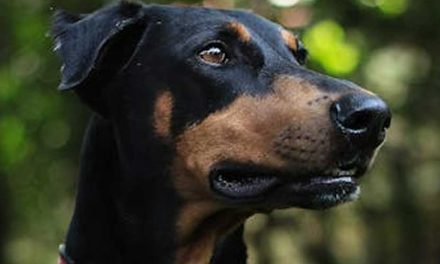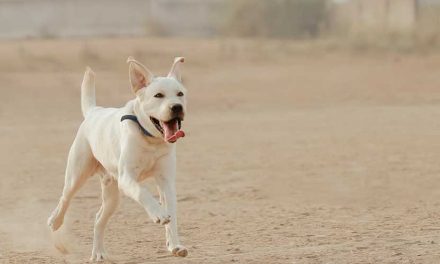For many dog owners, tuning into a subtle, yet significant season can mean the difference between worry and understanding when it comes to their furry companions. No, we’re not talking about the seasons of the Earth, but rather the seasons in a dog’s reproductive cycle. Often, these can lead to behavioral changes and health concerns.
CANINE HORMONES
In this comprehensive guide, we delve into what dog owners need to know about dog heat cycles, how to identify when it’s happening, and its potential impacts on your pet’s health and behavior.
THE CANINE ESTROUS CYCLE: A PRELUDE TO HEAT
Before delving into the behavioral and health changes associated with a dog’s heat, it’s crucial to understand the estrous cycle. Much like humans, female dogs undergo menstrual cycles where their reproductive system prepares for the possibility of pregnancy. However, the canine estrous cycle differs significantly.
Unlike human menstrual cycles, a dog’s cycle does not involve a discharge of the uterine lining, known as a period. Instead, dogs have what’s called an estrous cycle, which consists of four stages: proestrus, estrus, diestrus, and anestrus. The most notable for owners being proestrus and estrus, also known as heat.
IDENTIFYING DOG IN HEAT: RECOGNIZING THE SIGNS
The onset of a dog’s heat is not always as clear-cut as it’s completion. Different breeds, sizes, and individual dogs can display a variety of signs, but some common ones include:
Behavioral Changes
- Restlessness: Your usually low-key dog may become more active and alert, showing signs of irritability and restlessness.
- Seeking Attention: You might notice an increase in affection and the desire to be close to you.
- Excessive Licking: Your dog may lick their genital area more frequently.
Physical Signs
- Swelling: The genital area will be swollen and there may be a slight discharge present.
- Flagging: Females may raise their hindquarters when their back is scratched or when other dogs are nearby.
- Excessive Urination: Dogs in heat tend to urinate more frequently, in part to mark territory and signal their fertility.
Changes in Appetite
- Some dogs may experience changes in appetite, either eating more or less than usual.
Changes in Activity Level
- A decrease or increase in physical activity can be a sign of heat.
Vocalizations
- Some dogs become more vocal, barking or whining more than usual.
Identifying when your dog is in heat is the first step in understanding and managing their reproductive health.
THE IMPACT ON HEALTH AND BEHAVIOR
A dog in heat can undergo significant hormonal fluctuations, which can lead to both health and behavioral changes that may concern owners.
HEAT-RELATED HEALTH ISSUES
- Pyometra: This is a potentially life-threatening infection of the uterus and is common in unspayed dogs in their senior years.
- Mammary Tumors: There is an increased risk of mammary, or breast, tumors in dogs that are not spayed before their first heat.
- Behavioral Stress: The changes in your dog’s hormone levels can make them more anxious, leading to increased urination, aggressive behavior, or an excessive need for attention.
MANAGING THE HEAT
- Confinement: One of the easiest ways to avoid unwanted pregnancies is to keep your dog confined indoors or within a secure yard. However, be aware that males can still be attracted to your dog from a distance during these times.
- Spaying/Neutering: The most effective long-term solution is to spay or neuter your dog. This not only prevents unwanted pregnancies but can also reduce the risk of certain health conditions, including mammary tumors.
- Behavior Modification: Work with a professional dog trainer to manage changes in behavior during heat cycles.
- Pharmacological Control: There are medications available to suppress the heat cycle, but these should be used under the guidance of a veterinarian and are not without risks.
COMPANIONSHIP
- The Two-Side of Friendship: On one hand, companionship from the owner provides comfort during stressful times. On the other, interactions with other male dogs should be limited.
- Day-to-Day Life Changes: Owners may need to make adjustments in their dog’s daily activities to accommodate the behavioral and possible physical changes.
Understanding the signs and impacts of a dog in heat is key to ensuring your pet’s wellbeing and managing their reproductive health effectively.
ADDRESSING COMMON MYTHS ABOUT DOGS IN HEAT
There are several myths that have been perpetuated concerning dogs in heat, but it is important to separate fact from fiction:
- Myth: A female dog should have a heat cycle before spaying. This is not necessary and may actually increase the risk of certain health issues.
- Myth: Male dogs behave the same when a female is in heat. While some may be more restless or excitable, each dog’s response can vary.
- Myth: Female dogs in heat should not be exercised or spayed. Exercise is beneficial during heat cycles, and spaying offers numerous health benefits.
By demystifying these misconceptions, owners can better address their dog’s reproductive health needs.
CONCLUSION: LIVING IN HARMONY WITH THE CANINE ESTROUS CYCLE
Living in harmony with your dog’s season takes patience, understanding, and proactive care. By recognizing the signs, managing your dog’s health and behavior, and addressing common misconceptions, you can navigate your pet’s reproductive seasons with confidence.
Yet, the most important note to be taken away is that dogs, like humans, deserve to live a life free from preventable health issues and undue stress. As a responsible owner, it falls upon you to either educate yourself on how to manage a dog in heat or consider the spaying or neutering options that will ensure your dog’s hormonal season is just another part of their happy, healthy life.








